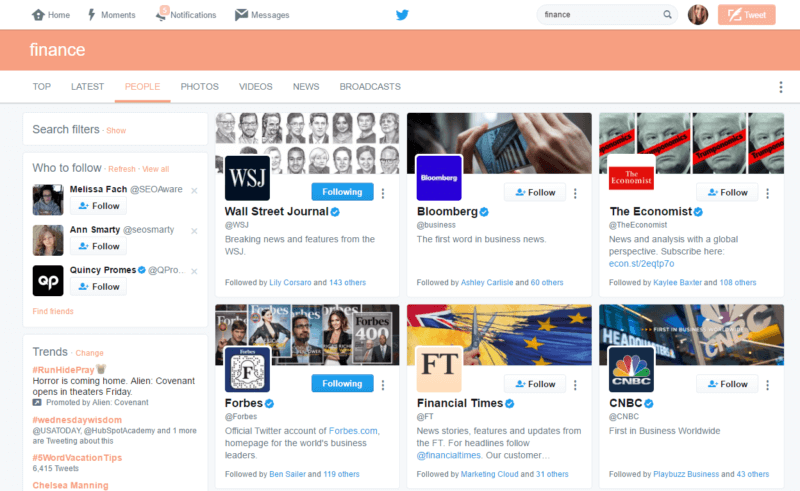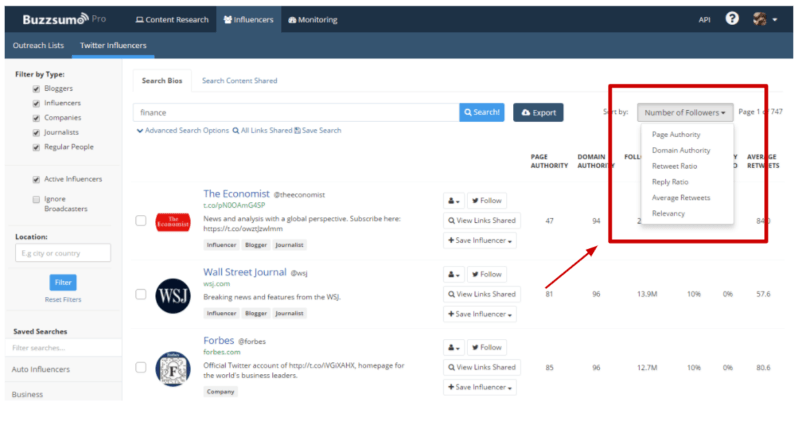Not getting what you want from your outreach emails? Follow these 10 steps.
- Fahad H

- May 24, 2017
- 6 min read
We send emails for a lot of reasons. Sales teams send them to generate new leads. Content marketers send them to try to get a link or encourage an influencer to share something on one of their social accounts.
Point is, we rely heavily on emails to try to convince others to do something for us. Unfortunately, someone’s inbox isn’t always the most persuasive channel. Researchers at Northwestern University School of Law found that online communication like emails has a limiting effect on persuasion.
But don’t panic! In this post, I’ll walk you through 10 easy tricks that will help you overcome common obstacles — like how to spark interest and motivate action — in order to get your content from the bottom of someone’s inbox to their front page.
1. Identify targets with high engagement that already promote similar content
This is one of the most time-consuming parts of the outreach process, but trust me, the effort is worth it.
The key to ensure a high ROI from your outreach efforts is to target high-quality influencers within your specific vertical. Below are two ways to determine whether or not a target is worth pursuing:
Use social media to search keywords related to your content. This is pretty self-explanatory. By searching for relevant keywords on social, you’ll be able to identify publishers that have the largest built-in audiences. For example, if I am promoting a project on personal spending habits, a simple “finance” search on Twitter provides me with a number of top-tier publishers that would make great targets (see below).

Use the “influencers” tab on BuzzSumo. This provides a more detailed look at both the publishers and specific individuals who are posting content around your keyword. Using the “finance” example again, you can see below that BuzzSumo allows you to sort your results by page authority, domain authority, retweet ratio, reply ratio, average retweets, relevancy and number of followers.

2. Avoid personal email accounts and contact forms at all costs
A sure-fire way to get your pitch deleted is to send it to someone’s personal account or submit it through a generic contact form. To increase the likelihood of a response, go the extra mile and find a contact’s professional email account.
The best place to start is their Twitter profile. If your contact has a Twitter account, there’s a good chance they have their email address listed in the section just below their profile picture. If it’s not explicitly listed, though, don’t panic. You’ll likely see their company’s URL. Visit the site’s contact page to get some insight on their email structure. From there, use a site like MailTester.com to make an educated guess. “firstname@domainname.com” and “firstinitiallastname@domainname.com” are great places to start.
3. Pique interest with an enticing subject line
Think of subject lines as first impressions. The best ones reveal something new, are highly personal and are relevant to the interests of the person you’re speaking with. There are three types of subject lines that do this:
Statistic-based: Calls out an engaging quantitative data from your content. For example, “Only 32% of men find partner’s employment ‘extremely important’ [New research]”
Content title: Says exactly what your content is about, and works best when your content is inherently interesting. For example, “These 100 celebrities post on Instagram the most [New data]”
Information gap: Based on the information-gap theory by George Loewenstein, this subject line connects something the recipient knows with a data point they don’t know. For example, “[Exclusive] This is the ideal age to learn about personal finances”
4. Start on a personal note
Getting someone to open your email is only half the battle. If your subject line is your first impression, someone opening your email is a “yes” to a second date, and the introduction to that same email is the start of a budding relationship. And like any relationship, your intro should be genuine and make some sort of personal connection.
So what are some ways to find more detailed information about your recipient?
Read previous posts: If they publish frequently, mention a particular stat you enjoyed about one of their more recent posts.
Browse their social media: Odds are whoever you’re reaching out to is on a least one social channel, so share something they posted in a tweet, for instance, and tag them so they’ll see it.
A simple Google search: This is a great way to find someone’s personal website where they’ll have a treasure trove of some of their favorite things they haven’t shared elsewhere.
5. Emphasize how your content will benefit both parties
Ego is one of the core components of Maslow’s Hierarchy of Needs, so as humans, we respond favorably when someone encourages it. You can increase your chances of a response by reminding the recipient how publishing your content will benefit both of you.
A great way to do this is through the principle of confirmation bias. Researchers at New York University found that participants who were presented with information that confirmed their own beliefs were more likely to agree with and positively review material. When applied to outreach, this means that you want to highlight ways in which your content reaffirms the recipient’s own ideas — which simultaneously is a big ego boost.
6. Make sure what you want is clear
Get as specific as you can with your ask; this makes it harder for them to say no. For instance, compare these two CTAs:
“Whenever you get a chance, we would love for you to complete our survey.”
“If you have 10 minutes to spare, we’d love for you to fill out our survey. We promise to share the results with you so you can see any important trends we might find.”
The second CTA would likely generate more responses, in large part because it was much more specific. Not only did it mention how long the survey would take, but it emphasized value to the recipient by letting them know they’d get the results as well.
7. Keep your email short and sweet
You’re pitching your content because you’re excited about it, which also makes it easier to say a lot about it. However, your outreach email is not the place to get wordy.
A good rule of thumb is to keep your pitch around 200 words, using bullet points and bold or italics so that it’s easy to skim. The faster your email can be read and understood the better.
8. Timing is key
The probability of your email being opened and read changes depending on when you send it. A survey of more than 500 publishers revealed that almost 70 percent of editors preferred to be pitched in the morning.
If you’re using Gmail for your outreach efforts, I suggest downloading the Boomerang extension to schedule your emails for the correct date and time. My personal preference is to schedule emails any time between 8 a.m. and 10 a.m. Tuesday through Thursday.
9. No response? Follow up without being too needy
After sending your initial email, there’s a high probability you’ll stare at your inbox while continually clicking “refresh.” However, don’t give up! No response could simply mean that their inbox was flooded with emails and you only need one more push to get your email to the top. Once a few days have passed, follow up with an email that adds value.
Here’s an example of a follow-up that worked:
Hi Kimberlee, Following up to see if you had a chance to check out #Ad Analysis. Some additional stats:
More than 90 percent of the top 100 brands in the US utilize Instagram for marketing and promotion.
Although someone like Selena Gomez can make upward of $500K a year in sponsored posts, most of those surveyed believed that a majority of industries pay less than $100 for a single post.
The Clarendon filter generated the most likes. Any interest in sharing with your readers? Cheers, Andrea
Why was this follow-up successful? It provided additional value to the recipient through new stats in fewer than 100 words, and I gave her time to sit on the initial email (six days, to be exact).
10. Maintain the relationship
This is a big step that is often overlooked. Most publishers want to maintain a relationship with you if you send them interesting content because they know you’re a reliable source for any future stories.
Aside from sending a thank-you email once your content is live, here are some other ways you can stay on an influencer’s radar:
Comment on their latest post, particularly if it doesn’t include any of your own content.
Connect with them on multiple social networks, preferably immediately after they publish your content.
Send emails that include content the influencer might enjoy (e.g., I’ve sent editors music I knew they would like).
Offer to collaborate on future research.
Effective outreach emails can be the beginning of a long-term, mutually beneficial relationship that can get your content in front of incredibly large audiences. It can be difficult to get that initial response, but these 10 steps can help you achieve it — and take your entire outreach process from good to great.








Comments